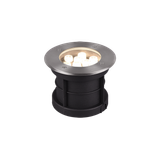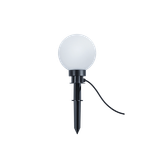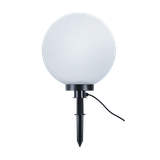Trio In-ground luminaires





trio in ground luminaires site context and build philosophy
For public squares, hotels, and coastal promenades we specify cast aluminium bodies with 316L stainless bezels, toughened glass, and potted cable tails to keep water outside the optical chamber. Drive-over static loads typically span 1–2 t with IK10 impact faces; confirm wheel loads against slab design and sleeve depth. Thermal paths must reach the soil or concrete via the sleeve, so we avoid foam backfill and always provide drainage beds. Where glare matters, use honeycomb or half-shields and setbacks from façades. When tendering trio in ground luminaires, we tag sleeve type, bezel finish, and load class on the same line as power and CCT to prevent substitution errors.
trio recessed ground lights product range and optics
Families usually cover 3–20 W single-chip accent to 30–40 W wall-washers, in 2700/3000/4000 K and CRI 80/90 with R9 options. Beam sets run from 10° spot to 60° flood, plus elliptical blades for grazing. Adjustable gimbals (±10–20°) simplify aiming without breaking the seal. RGB/RGBW variants sit on 24 V DC or DMX nodes; white versions are commonly 230 V with remote control gear. For long lines of trio recessed ground lights, we standardise CCT bins and lens types so night swaps don’t disturb colour continuity.
trio buried led fixtures technical specifications and standards
Ingress protection is IP67/IP68 tested per EN 60529; impact is IK10 per EN 62262; photobiological safety uses EN 62471. Drivers follow IEC 61347 and, where required, DALI-2 (IEC 62386). Ground-recessed safety aligns with EN 60598-2-13; corrosion tests for coastal installs use ISO 9227 salt mist classes. Cable terminations are via gel-filled joints or IP68 glands; typical tails are H07RN-F 2×1.0 or 3×1.0 mm² at 1.5–2.0 m. PWM dimming should sit ≥1.5 kHz for cameras. When we integrate trio buried led fixtures, we specify sleeve material, drainage hole diameter, sealing method, and torque for bezel screws to keep EMC and IP intact.
trio outdoor inground lighting applications and compatibility
Façade grazing, tree uplight, pathway markers, and column footing accents are the core tasks. Near turf or irrigation, add breathers to avoid condensation cycling. In freeze zones, sleeves must drain below frost line; use vertical conduits to stop standing water. Control integrates with building BACnet via DALI gateways or DMX for dynamic scenes. For plazas using trio outdoor inground lighting, we sequence circuits by façade bay and keep emergency egress lux independent of show lighting.
trio landscape luminaires integration with other Trio products
Match CCTs to Trio bollards, wall packs, and linear façade washers so scenes remain coherent. Shared optics (e.g., 10°/30°) across families simplify spares. For handrails and step lights, align stainless grades and gaskets to one maintenance kit. On retail forecourts, trio landscape luminaires are paired with canopy luminaires; we keep driver brands consistent to unify dimming curves.
trio waterproof ground lights selection criteria for B2B buyers
Fix the load class first—pedestrian, light-vehicle, or service yard—then choose sleeve type (PVC pour, stainless can) and glass thickness (8–12 mm tempered, anti-slip where wet). Next, target illuminance and beam: tight beams for tall columns, ellipticals for wash. Select power and optics to meet 3–5 W/m façade accents or 50–150 lx tree canopies. Confirm soil chemistry; in chlorides or fertilised beds, step to 316L and anodising ≥20 µm. On coastal jobs using trio waterproof ground lights, we add sacrificial fasteners and specify dielectric grease at every stainless-to-aluminium interface.
trio exterior recessed luminaires installation and maintenance
Set sleeves on compacted sub-base with a gravel sump; keep sleeve lips flush with finished grade to avoid trip edges. Bond fixtures per local earthing rules; loop protective earth through stainless collars where present. Seal between bezel and paving with neutral-cure silicone, not bitumen. Record tilt settings and lens codes in the O&M. When replacing trio exterior recessed luminaires, always re-torque bezel screws after thermal cycling and recheck gasket compression.
Product range and series overview
Expect three tiers: compact markers (≤5 W, walk-over), architectural uplights (10–25 W, adjustable), and drive-over units (up to 40 W with higher static load). Accessories include glare louvres, half-shields, anti-slip lenses, concrete-pour sleeves, and IP68 quick-disconnects. White, tunable-white, RGB, and RGBW lines share housings to keep site aesthetics aligned.
Technical specifications and standards
Electrical: 230 V AC with remote drivers, or 24 V DC for low-voltage grids. Power factor ≥0.9, surge 4–6 kV line-earth recommended near long outdoor runs. Optics: field-changeable lenses, TM-30 reports on request. Thermal: −30…+45 °C ambient with soil contact; lumen maintenance projected via LM-80/TM-21 of emitter packages. Materials: 6063-T5 bodies, 316L bezels, A4 screws, silicone gaskets rated ≥150 °C, low-iron glass. Cabling: specify gel joints, resin pots, or heat-shrink kits; avoid rigid conduits that trap water.
Applications and compatibility
Hotels and civic landscapes, waterfront promenades, retail forecourts, and campus walkways. Compatible with Trio drivers, DALI-2 controls, and façade controllers. For step-free routes, use flush bezels with anti-slip etch. In softscape beds, offset beams to avoid leaf scorch and irrigation glare.
Integration with other Trio products
Coordinate with Trio bollards, pathway lights, and linear grazers to balance vertical and horizontal illuminance. Emergency circuits can share housings using maintained drivers; signage spots reuse the same CCT bins for visual unity. We keep common spare sets—gaskets, lenses, tails—across families.
Selection criteria for B2B clients
- Load class and sleeve design versus substrate. 2) CCT/CRI and beam per target surface. 3) Control topology DALI-2/0–10 V/DMX. 4) Corrosion class and finish package for site chemistry. 5) Cable routing and jointing method. 6) Spare policy—one lens set and one gasket kit per ten fittings.
Advantages of working with Bankoflamps
You get project-specific pricing and near-hour quote turnaround by EAN/MPN. The portal shows live EU stock, lead-time windows, and downloadable price lists with validity dates you can plan against. A named account manager checks load classes, sleeve specs, IP/IK ratings, surge protection, cable jointing, and driver compatibility against your drawings before release. We consolidate partials so sleeves, fixtures, lenses, joints, and controllers arrive room-bundled with tracking visible end-to-end. Trusted partners can use post-payment up to 30 days. We support deliveries and coordination across France, the Baltics, Germany, Spain, Italy, Belgium, and the Netherlands.